Museum of Contemporary Art Chengdu, China
March 18 — April 17, 2016
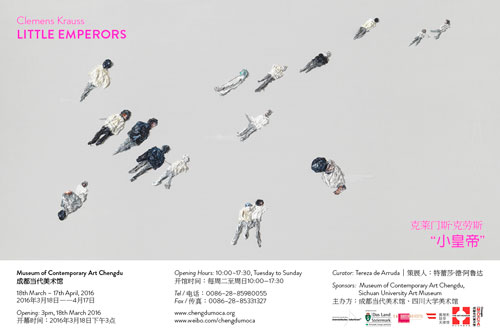
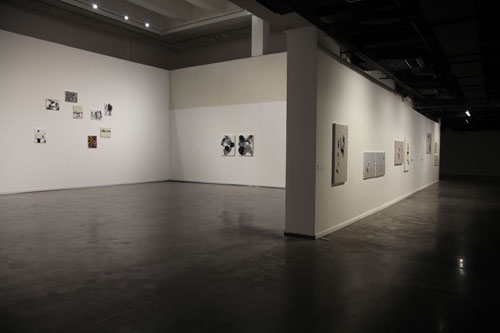
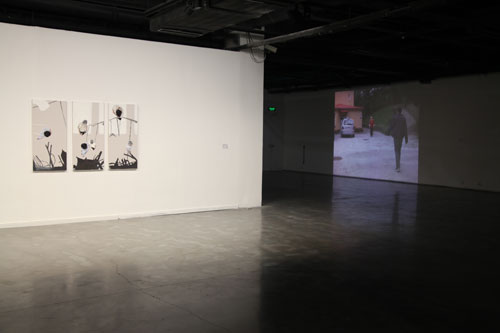
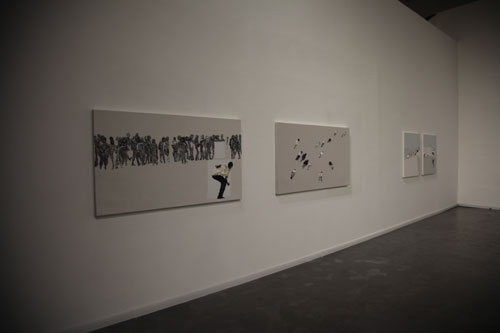
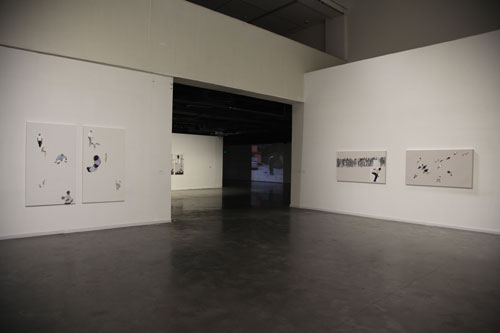
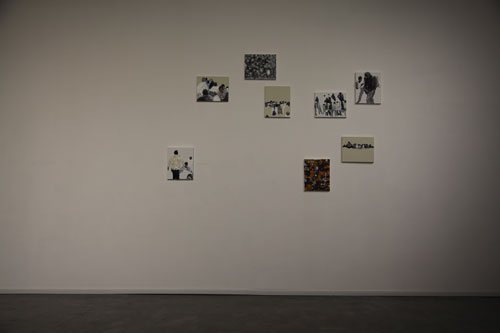
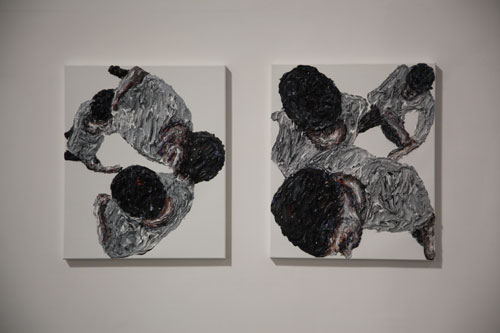
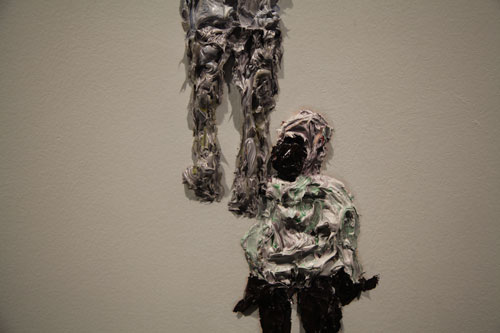
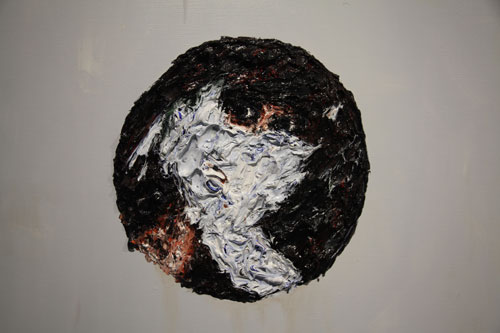
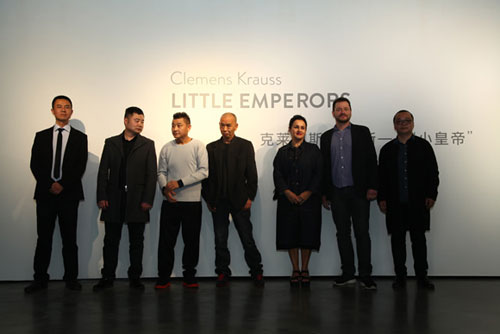
Little Emperors is Clemens Krauss' first solo exhibition in China and has been especially conceived for the Museum of Contemporary Art Chengdu.
In his work, Krauss deals with the significance and meaning of gestures – both literally and metaphorically. By analyzing the motivations behind social-political movements in various contexts and their medial representation, Krauss points out the in-between, the hidden and subtle content behind them. His research and artistic work has been dominated by this through his experiences in different cultural contexts.
Social predetermined breaking points are dependent on cultural, political and economic conditions as well as on the structure of interpersonal relationships. In terms of cultural and political change, migration and generational dynamics, the current situation in China exemplifies global social developments of the 20th and 21st century.
The subjugation of individuals and their wants and needs for political objectives is usually seen as impinging massively on the individual's rights to self-determination.
Through a generation of grownup only-children it might become evident how a contemporary society is constellated in terms of social and economic as well as cultural and psychological issues. The exhibition Little Emperors deals with a 'society of the (male) individual child' and the development of the social collective. What kind of self-imago can be generated in this context? What forms of social interaction exist between isolated bodies? How does the problematization of the debate on the individual body, which constitutes the social collective through interaction, appear? How can breaking points of a society be defined, what does surface and boundary mean in this context? What roles do different media and the inherent qualities of painting play in relation to the content of this project?
These are issues perceived by Clemens Krauss and remain relevant to their conflict with contemporary Chinese society and culture, which he described as leitmotifs for the artistic impulse of the conception of the exhibition Little Emperors. The reception of these isolated bodies in their respective social contexts occurs on diverse levels in Clemens Krauss' work and surpass the clichéd notions of the truly unique nature of the individual child.
Krauss initially sees paint and its use in the sense of a colour-and-paint dichotomy. Just as the Ancient Greek chronographic concepts - Chronos (for time) and Kairos (for the right moment) complemented each other - paint (and colour) in the paintings of Clemens Krauss refer to both the visual retinal stimulus colour quality as well as the structural, organic materiality of the body.
The specific poses of the protagonists in the works – "bodies" as Krauss simply calls them - are exemplary poses of young - mostly male - protesters, rioters or fighters. Literally Krauss re-enacts these paradigmatic poses and recombines them on reduced backgrounds on the canvas (or the wall). This performative element is inherent to his work, as seen in his installations, videos or actual performances.
In his recent works those backgrounds are co-structured by fragile forms of destroyed architecture. The affected human being in an affected environment – "der Konflikt scheint längst angekommen zu sein." The affected human being in an affected environment - the conflict appears to have arrived long ago. Be it in Europe and the so-called West, in the Middle East or the rest of the world. The way how the body is spatially correlated set into relation to not physical structures, refers to social hierarchies, repression- and order systems, and at least to the relationship of the painted body to its contemplative counterpart. In the triangle artist - object - viewer a social constellation is already constituted. The aestheticising object that is nonetheless critical in its core, represents the power of order, by which it is shown - as in the case of Clemens Krauss – since the work can function as a valuable asset in the art market. This condition is repeatedly eluded to by Krauss in his temporary wall paintings. By placing the original on the immovable architecture of the museum, its own limit is applied simultaneously. Thus the project Little Emperors is about the freedom and "unfreedom" of the actor in a system based on power and capital.
Krauss' works take in the medium of space and context and the triangulating function of the observer and display an attempt to verbalize the question of the role of the individual in the political, cultural and social context. This comes close to the artist's concept of the human gesture as a kind of enigmatic model-code to paraphrase more universal phenomena.
The little emperor turns into the lone warrior in a social structure that can eventually be measured only on the basis of their own biography. Aesthetics appears as the last resort and final reference point – i.e. "zero space of the body" (Krauss). The pure material presence functions finally as a symbol of the helplessness of the lost individual.
The issues of dependence and responsibility, distribution of cis- and transgenerational transfer and of those neurotic patterns that are repeated in both the individual and the collective, are universal. Thus it turns out to be evident that the entire problematized theme of the exhibition Little Emperors is only exemplarily negotiated on the current situation of China, and at the same time more generally valid social phenomena that occur in all social constellations and are broached in this topic.
Museum of Contemporary Art Chengdu [visit website]
C1, Tianfu Software Park, Tianfu Avenue, Chengdu, P.R. China
Exhibition period: March 18 — April 17, 2016
